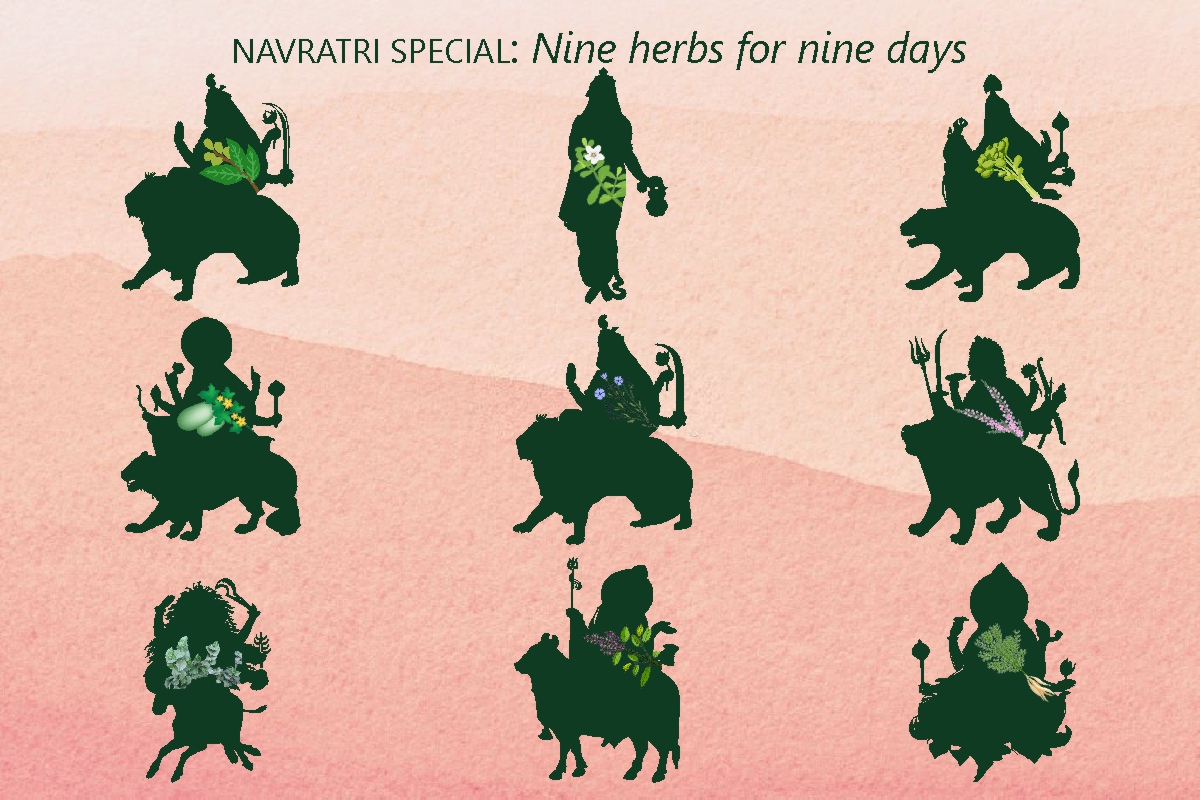We all know that in Navratri, we all celebrate nine different forms of Maa Durga. A very few people are aware of the fact that there are nine different herbs representing these nine forms of the Goddess.
These nine herbs are believed to contain the vital qualities of Maa Durga. Also known as Durga Kavach, these act as a shield to protect us from sickness, according to Brahma Ji.
Let’s Discuss These Herbs Individually:
First Day of Navratri
Mata Shailputri is worshiped on the first day of Navratri. She symbolizes patience and devotion. Harad is the herb that reflects the essence of Mata Shailputri.
Also known as Myrobalan, it contains various health benefits.
Due to its deepan (appetizer) and rasayana (rejuvenating) properties, it helps in strengthening immunity and relieving digestive problems.
It is also effective in treating coughs and colds. General weakness in the body can be overcome with the help of this herb.
Second Day of Navratri
Goddess Brahmacharini is the goddess worshiped on the second day of Navratri. She represents love, loyalty, wisdom and knowledge.
Herb symbolizing this goddess is Brahmi which is really effective in improving blood circulation, reducing inflammation and calming the mind which helps in elevating stress and anxiety.
Third Day of Navratri
Goddess Chandraghanta is the third day goddess of Navratri. Her name translates to “one with a bell-shaped half-moon”.
Her third eye is always open, indicating that she is always prepared to fight evil. The herb symbolizing her is Chamsura.
Also known as Garden Cress, this herb is really effective in pacifying vata and pitta dosha.
Moreover, it is useful in curing obesity and filtering the blood.
Fourth Day of Navratri
Goddess Kushmanda is worshiped on the fourth day of Navratri symbolizing energy and warmth. Kushmanda is also a name of a herb which acquires various health benefits.
It is useful in strengthening the respiratory system, increasing stamina and providing strength.
Also known as Winter Melon, it contains cooling properties which is effective in reducing pitta in the body.
Fifth Day of Navratri
Skandmaata is the goddess worshiped on the fifth day of Navratri. The herb representing this goddess is Alsi.
Also known as flax or linseed, it helps in managing heart diseases, losing weight and reducing ama from the body thereby improving the digestive fire.
Sixth Day of Navratri
Mata Amb is worshiped on the sixth day of Navratri. The herb machika represents this goddess. This herb is extremely beneficial in relieving high pitta conditions.
Seventh Day of Navratri
Goddess Kalaratri is worshiped on the seventh day of Navratri. She represents power, energy and the strength of prevention.
The herb for this day is Nagadaun and it is really helpful in purifying blood which is why it is recommended to take this herb when you’re menstruating.
Eighth Day of Navratri
On the day of Ashtami, Maa Mahagauri is worshiped. And tulsi is for this day. This herb is very commonly used in every house.
It helps in relieving stress and anxiety and maintaining blood circulation. It’s a natural immunity booster which helps in reducing fever and cold.
Ninth Day of Navratri
Mata Siddhidatri is worshiped on the last day of Navratri. Herb of this day is Shatavari which is really helpful in treating PCOS and infertility. It also helps in reducing the symptoms of menopause.
This marks the conclusion of our blog. We wish you well and encourage you to adopt Maa Durga’s healthy herbs into your daily lives.

